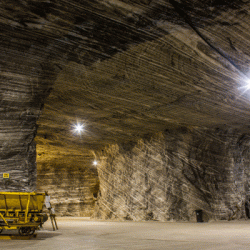Marrying industrial policy with sustainability

The European Union is planning its new revitalised industrial policy, which aims to secure Euromines industrial competitiveness. The new policy aims to integrate EU policies on sustainable trading, the internal market, research and innovation, as well as employment, environmental protection, and public health.
This means in many ways, squaring circles since EU industrial policy is currently aimed specifically at industrial structural changes, encouraging SMEs and optimising industrial potential through innovation, research and technological development.
At the same time the European Commission also looks at foreign direct investment strategies and industrial development to achieve the UN Sustainable Development and Paris Agreement goals. Its “New Industrial Policy Strategy” aims to make the EU the world leader in innovation, digitisation and decarbonisation.
Supplying Europe’s strategic value chains is key, in order to create competitive manufacturing value chains, to prevent technological dependence on international competitors and to capitalise on jobs, growth and investment.
Since this entails a major energy transition, the Commission has identified the development of batteries for energy storage and mobility targets as a key enabling technology. Vice President and European Commissioner for the Energy Union Maroš Šefčovič therefore launched the EU Battery Alliance in October 2017. This cooperative platform gathers the Commission, interested EU countries, the European Investment Bank, key industrial stakeholders and innovators.
Raw materials: The “holy grail” of EU 21st century industrial policy
Mr Šefčovič stated in December 2018 that:
Raw potential
Europe has natural resources, both world-class deposits and significant under-explored potential. Today, extraction occupies a fraction of 1% of the land surface on a temporary basis.
Europe has not invested sufficiently into mineral exploration, which is key to developing and maintaining our industry. EU-wide databases have been established, based on historic data of decades of exploration not modern technology. Economic assessment of so-called “critical raw materials” show that both the number of raw materials required for future technologies and the constraints on their accessibility is growing.
Europe has mobilised many studies and research projects and mineral policies have been revised in EU member states. However, the fruits of these efforts still need to be harvested by adjusting regulatory frameworks. Implementation is key.
What is also urgent is access to finance. Agreements such as under the free-trade agreement between Canada and EU member states (CETA) will hopefully help to generate additional investment in the sector. Europe and Canada already have a track record of good cooperation and investment and trade in both directions in the raw materials sector. Core activities, such as a feasibility study on mineral investment, representation at Canada’s PDAC and the Partnership with Canada at the German BAUMA (April 2019) show a way forward.
The long-standing cooperation and negotiations of free trade agreements with Latin American countries, or capacity building with African countries in the sector, are equally important in this context.
Addressing the investment gap
The European Commission identified a considerable investment gap into sustainable technologies. Unfortunately, it seeks to redirect investments to close this gap instead of trying to attract new investments.
The EU is now examining how to integrate sustainability considerations into its financial policy framework to mobilise finance for sustainable growth. But, while it states that this must take into account environmental, social and governance considerations, its current proposals focus almost exclusively on environmental criteria and, in particular, climate change. There is insufficient consideration of the mechanics of industrial change, for example, the increased raw materials needed to expand renewal energy generation and distribution or electric vehicles. This narrow focus does not allow for both industrial transition and the transition of companies and investors themselves. How can standards exemplified by the UN’s SDGs grow and take root in smaller and growing companies and actors along our value chains if finance is denied to them?
Declared objectives for the classification system being developed for the sectors that should be eligible for future “Sustainable Finance” are reducing pressures on the environment, addressing green-house gas emissions and tackling pollution, and minimising waste and improving efficiency in the use of natural resources.
The UN, OECD and EU have all identified that demographic and economic growth will drive demand for raw materials exponentially in the coming decades. As Europe’s industrial future requires substantial amounts of raw materials, this latest EU policy proposal needs to be reconsidered.
Further information


